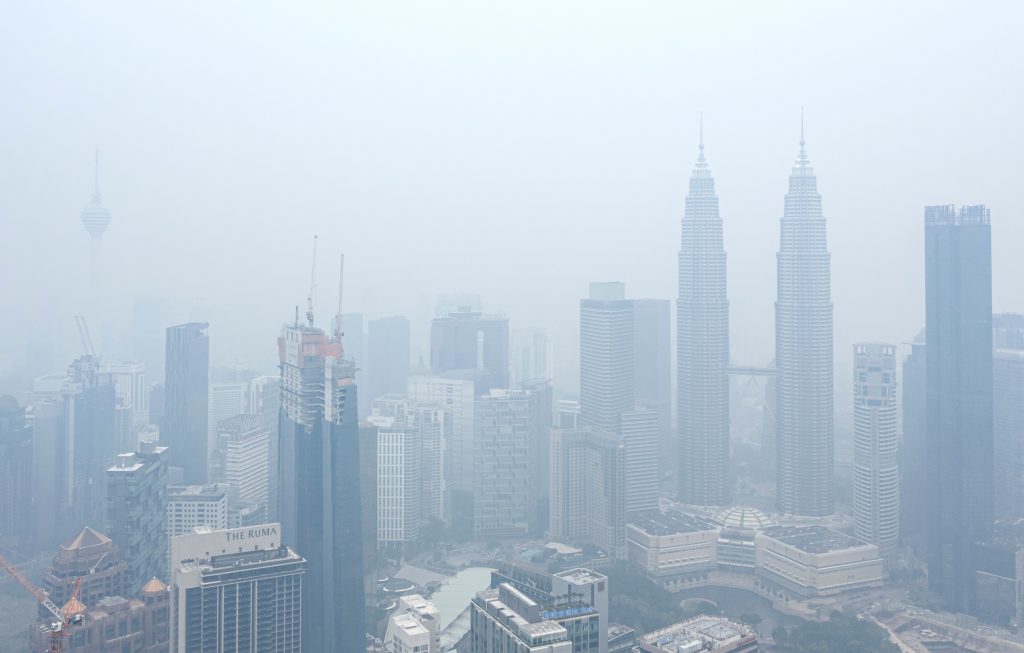If you’ve lived in Malaysia long enough, you’ll be familiar with that moment you open your door or windows and you instantly get the smell of smoke lingering in the air, the skies go dull, and the headlines scream ‘API UNHEALTHY’. Yes, it’s the dreaded haze season and that’s haze in Malaysia.
While haze might seem like a seasonal nuisance, its impact on our health can be far more serious than many realise. In this article, we’ll explore the causes of haze in Malaysia, the health effects of haze, and simple, practical steps you can take to protect yourself and your family.

What Causes Haze in Malaysia?
Haze is caused by tiny airborne pollutants, including particulate matter like PM2.5, which reduces visibility and poses significant health risks. In Malaysia, haze is often the result of open burning and forest fires, particularly from neighbouring countries like Indonesia. These fires, frequently linked to land-clearing for agriculture, release massive amounts of smoke that travel across borders, affecting air quality here at home.
Compounding the problem are local sources such as vehicle emissions, construction activities, and industrial pollution, all of which worsen the situation during dry spells.

Health Effects of Haze
The health effects of haze are closely linked to exposure to PM2.5 fine particles that are small enough to enter the lungs and even the bloodstream. The higher the Air Pollutant Index (API), the greater the health risk.
Most common haze-related health issues include:
- Respiratory problems: dry throat, cough, wheezing, shortness of breath, and asthma attacks.
- Eye irritation: red, watery, itchy eyes.
- Skin issues: dryness, itchiness, or rashes.
- Headaches and fatigue: often due to reduced oxygen intake and exposure to pollutants.
- Heart problems: people with cardiovascular conditions may experience worsened symptoms due to inflammation and stress on the heart.
High-risk groups include children, senior citizens, pregnant women, and individuals with existing health issues such as asthma, heart disease, or allergies.
Understanding the Air Pollutant Index (API)
In Malaysia, the Department of Environment (DOE) uses the Air Pollutant Index (API) to measure and report air quality. The readings are updated hourly on platforms like APIMS.
- 0–50: Good
- 51–100: Moderate
- 101–200: Unhealthy
- 201–300: Very unhealthy
- 301 and above: Hazardous
When API readings go above 100, it’s time to limit outdoor activity and take precautionary measures.

How to Protect Yourself During Haze
Here are some effective ways to protect yourself from haze and minimise health risks:
#1 Stay Indoors When Possible
Keep windows and doors closed. Use air purifiers equipped with HEPA filters to clean indoor air. Avoid outdoor exercise or strenuous activities.
#2 Wear the Right Mask
Use a certified N95 mask or KN95 respirator when heading outdoors. Surgical and cloth masks do not offer sufficient protection against PM2.5 particles.
#3 Keep Yourself Hydrated
Drinking plenty of water helps your body flush out toxins. Herbal teas, fruits with high water content (like watermelon), and clear soups are good additions.
#4 Monitor the API Daily
Check local air quality updates on apps or official platforms like apims.doe.gov.my before making plans. If the API is high, reschedule outdoor activities.
#5 Limit Indoor Pollution
Avoid smoking indoors, using incense, or burning candles during the haze. These add to indoor pollutants and worsen air quality.
The haze is more than just an inconvenience, it’s a serious health hazard. With increasing frequency and intensity due to climate change and land-use practices, Malaysians need to be prepared and informed.
By monitoring the API, using proper protective gear, and making small daily changes, we can safeguard our health and our loved ones, even when the skies turn grey.












